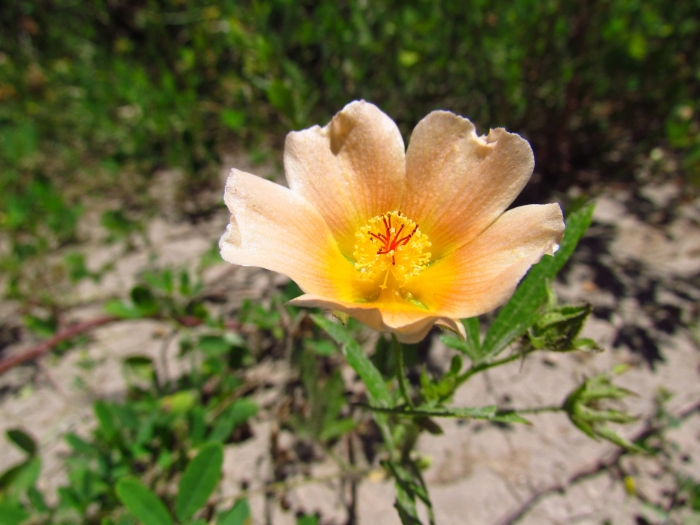Red Malva
(Modiolastrum lateritium)
Red Malva (Modiolastrum lateritium)
/
/

Matias Cabezas
CC BY 4.0
Image By:
Matias Cabezas
Recorded By:
Copyright:
CC BY 4.0
Copyright Notice:
Photo by: Matias Cabezas | License Type: CC BY 4.0 | License URL: http://creativecommons.org/licenses/by/4.0/ | Rights Holder: Matias Cabezas | Publisher: iNaturalist | Date Created: 2018-11-28T12:35:12-08:00 |























Estimated Native Range
Summary
Modiolastrum lateritium, commonly known as Red Malva or Little Hollyhock, is a semi-deciduous perennial herb that originates from South America, particularly in regions with open grasslands, pampas, and along roadsides. It typically grows rapidly to a height of 0.5-1.5 feet (0.15-0.45 meters) and is known for its sprawling habit. The plant features heart-shaped leaves and produces vibrant red or orange flowers that are quite showy, blooming profusely in the summer and extending into fall. The flowers attract pollinators and add a splash of color to garden settings.
Red Malva is valued for its ease of maintenance and its ability to adapt to various soil types, including clay, loam, and sandy soils. It is often used in border plantings, as ground cover, or in wildflower gardens for its ornamental flowers and rapid growth. It thrives in full sun to part shade and requires medium amounts of water with good drainage. While it is not known for major diseases, it can become invasive outside its native range, so gardeners should consult local regulations before planting. It is also important to manage its spread to prevent it from outcompeting native flora.CC BY-SA 4.0
Red Malva is valued for its ease of maintenance and its ability to adapt to various soil types, including clay, loam, and sandy soils. It is often used in border plantings, as ground cover, or in wildflower gardens for its ornamental flowers and rapid growth. It thrives in full sun to part shade and requires medium amounts of water with good drainage. While it is not known for major diseases, it can become invasive outside its native range, so gardeners should consult local regulations before planting. It is also important to manage its spread to prevent it from outcompeting native flora.CC BY-SA 4.0
Plant Description
- Plant Type: Herb
- Height: 0.5-1.5 feet
- Width: 1-2 feet
- Growth Rate: Rapid
- Flower Color: Pink
- Flowering Season: Summer, Fall
- Leaf Retention: Semi-deciduous
Growth Requirements
- Sun: Full Sun, Part Shade
- Water: Medium
- Drainage: Medium
Common Uses
Border Plant, Butterfly Garden, Low Maintenance
Natural Habitat
Originates from South American open grasslands, pampas, and roadsides
Other Names
Common Names: Little Hollyhock
Scientific Names: , Modiolastrum lateritium, Malva lasiocarpa, Malva laterita, Malva lateritia, Malva peduncularis, Malvastrum lasiocarpum, Malvastrum lateritium, Malveapsis lateritia, Malveopsis lateritia
GBIF Accepted Name: